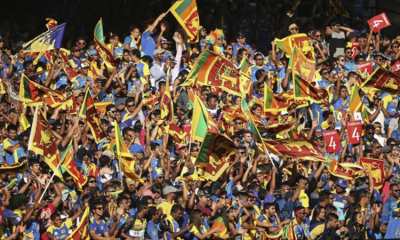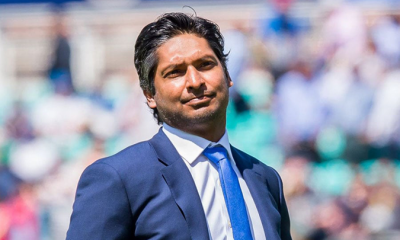Sports
How home teams are thriving in ICC Men’s Cricket World Cups
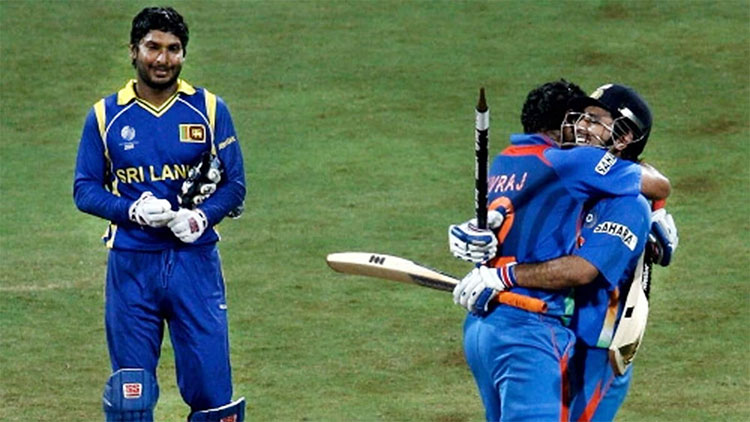
Pressure or advantage? The conundrum that faces the hosts of each ICC Men’s Cricket World Cup.
If the last three editions are anything to go by, it is an advantage to be playing at home.
But, up until the 2011 edition, only one team had ever won as hosts, and that was Sri Lanka in 1996 when they co-hosted with India and Pakistan.
Even then, they only played two games at home, winning the final in Lahore.
Since 2011, a home team has triumphed every time with India setting the trend which Australia and, most recently, England followed.
Each team had unique challenges to face en route to the trophy, but what worked for the home teams?
2011:
India’s legends lead them home
Legends were made, celebrated, and inspired at the ICC Men’s Cricket World Cup 2011.
The final on 2 April was the most memorable day for the great Sachin Tendulkar as he was finally part of a World Cup-winning squad.
He made only 18 runs in the showpiece, but he had stewarded India there with a Player-of-the-Match- performance in the semi-final against Pakistan.
Yuvraj Singh had also done his job, winning Player of the Tournament after piling up 362 runs and 15 wickets, doing so without knowing he was suffering from cancer.
Each player was facing a personal Everest as well as the collective one of attempting to win a World Cup under what felt like insurmountable pressure.
To prepare, they spoke with Mike Horn, an adventurer who became the first person to solo circumnavigate the Equator, who put into perspective the challenge ahead of them.
The first challenge they faced was opening the tournament against Bangladesh, Virender Sehwag began with a boundary and that is how the tournament ended – MS Dhoni hit the winning six in the final against Sri Lanka.
The captain had moved himself above usual No.5 Singh, the change paying off as he then compiled 91 runs from 79 balls to see India to a second title and send the nation into ecstasy.
Doing so, the pressure was released and the curse of the hosts winning on home soil was broken.
2015:
Australia surge to fifth trophy
The most successful team in the competition’s history, Australia were never going to be able to fly under the radar, and their performances in 2015 certainly caught the eye.
The World Cup started on a positive note when they beat their old rivals England by 111 runs at the MCG.
But spirits were dampened by a washout against Bangladesh before New Zealand took a low-scoring thriller at Eden Park, winning by just one wicket.
And hell hath no fury like an Aussie team beaten.
Michael Clarke’s men responded by putting on the highest score at a World Cup, crashing 417 against Afghanistan in a 275-run win.
Comfortable defeats of Sri Lanka and Scotland followed before Australia brushed aside Pakistan and India in the knockouts.
The latter became the sixth team to be bowled out by Australia in the tournament as they were reduced to 233 runs, 96 short of their target.
The same fate befell New Zealand in the final in Melbourne as they were all out for 183 which Australia chased down with 101 balls to spare.
The experience of previous wins outweighed the pressure of home expectations, not something England could say four years later.
2019:
Four years in the making
England had never won the ICC Men’s Cricket World Cup before and had been burned by a disastrous campaign in 2015.
But from the ashes grew new life, as captain Eoin Morgan led a rebuild with one aim, to win the World Cup on home soil.
There was time for beauty amid the ruthlessness, Ben Stokes’ stunning catch in the opener against South Africa firing up the tournament.
Morgan broke records as he blasted the most sixes in an innings against Afghanistan before Australia were blown away in the semi-finals.
The final at Lord’s was not about beauty or ruthlessness but as England attempted to do what had previously been impossible for them, they simply just needed to be in the contest.
The game ebbed and flowed as any good one-day match should before reaching a crescendo with a Super Over.
It almost had to be like this, the team who had set out to revolutionize the game, winning the World Cup in a way it had never been won before.
Now the tournament returns to the place where the trend started, and with India acting as solo hosts for the first time, all eyes will truly be on them.
But as 2011 showed, that is how they like it.
Sports
England face Australia in the battle of champions
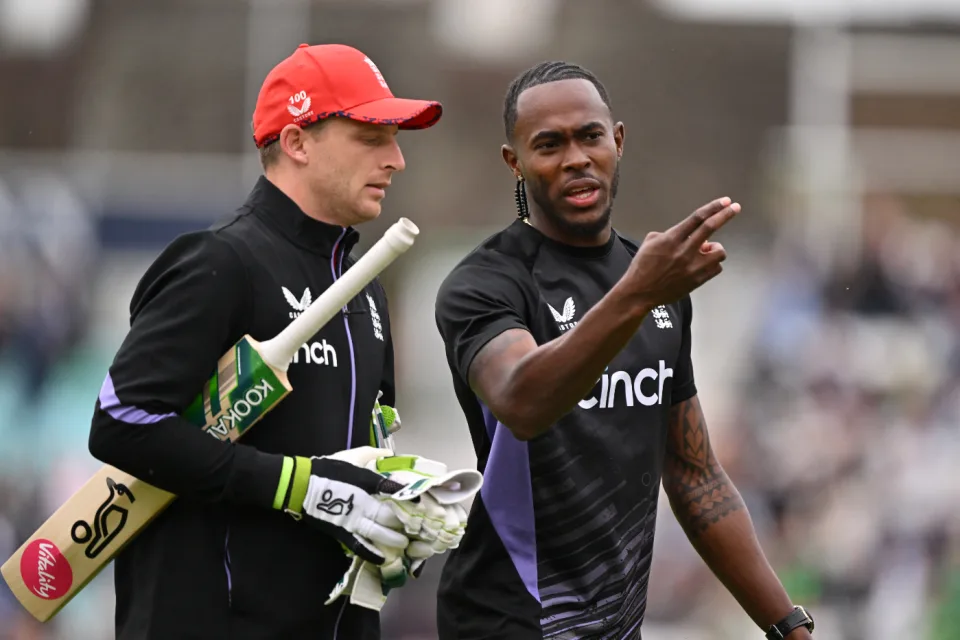
The first truly heavyweight clash of this expanded T20 World Cup format comes freighted with both history and subplots. A rematch of the 2010 World T20 final at Kensington Oval, the match pits Jos Buttler’s defending champions – who are aiming to become the first team to retain the trophy – against the Australian winning machine, victors at the 2021 edition and current world title-holders in Test and ODI cricket. And that’s before you throw in the Ashes for afters.
Already there is added pressure on England, after the rain in Bridgetown led to a share of the points in their opener against Scotland (and that having conceded 90 runs from 10 overs without taking a wicket in a tepid bowling display). Lose to their oldest rivals and it will leave their Super 8 prospects open to being waylaid by the perils of net run-rate calculations, or worse.
The Scotland match was the third abandonment in five suffered by England, after a rain-affected home series against Pakistan, which has clearly hampered their readiness for this campaign after almost six months without playing T20 together. It does not take much for a side to click in this format – and England looked in decent shape when they did get on the field against Pakistan – but Buttler will be anxious for things to go their way on Saturday, if only to avoid further questions referencing the team’s disastrous ODI World Cup defence last year.
Australia, under the laidback leadership of Mitchell Marsh would love nothing more than to add to the English sense of jeopardy – having helped bundle them out of the tournament in India on the way to taking the crown. Their head to head record is less impressive in T20 however, with England having won six of the last seven completed encounters, as well as that 2010 final.
Despite a wobble with the bat, Australia avoided mishap against Oman earlier in the week, the experience of David Warner and Marcus Stoinis shining through in difficult batting conditions. Surfaces in the Caribbean – not to mention those games staged in the USA – have already had teams scratching their heads; rather than the “slug-fest” England had prepared for, following a high-scoring tour of the Caribbean in December, it looks as if boxing smart may be the way to go.
Speaking of Warner, this could be the last time he faces up against England in national colours – and another match-winning contribution would likely reduce the chances of them meeting again in the knockouts. On the other side of the card is Jofra Archer, fresh from an emotional maiden outing at Kensington Oval and ready to take on Australia for the first time in any format since 2020. Can Mark Wood fire up England’s campaign, as he did during last summer’s Ashes? Will Pat Cummins be back to harass the old enemy once again? Seconds out, it’s almost time to rumble.
Cummins is set to return after being rested for the Oman game, which saw Mitchell Starc leave the field with cramp. Starc is understood to be fine and could keep his place – which would likely see Nathan Ellis miss out. Marsh is still not fit to bowl, with Australia likely to continue with the allrounder combination of Stoinis and Maxwell to give them cover.
Australia (probable XI): David Warner, Travis Head, Mitchell Marsh (capt), Glenn Maxwell, Marcus Stoinis, Josh Inglis (wk), Tim David, Pat Cummins, Nathan Ellis/Mitchell Starc, Adam Zampa, Josh Hazlewood
The one change England may consider is Reece Topley coming in for Wood, with the expectation that there will be some rotation among the seamers through the course of the tournament.
England (probable XI): Phil Salt, Jos Buttler (capt & wk), Will Jacks, Jonny Bairstow, Harry Brook, Liam Livingstone, Moeen Ali, Chris Jordan, Jofra Archer, Adil Rashid, Reece Topley/Mark Wood
[Cricinfo]
Sports
South Africa up against their bogey team in batter-unfriendly New York
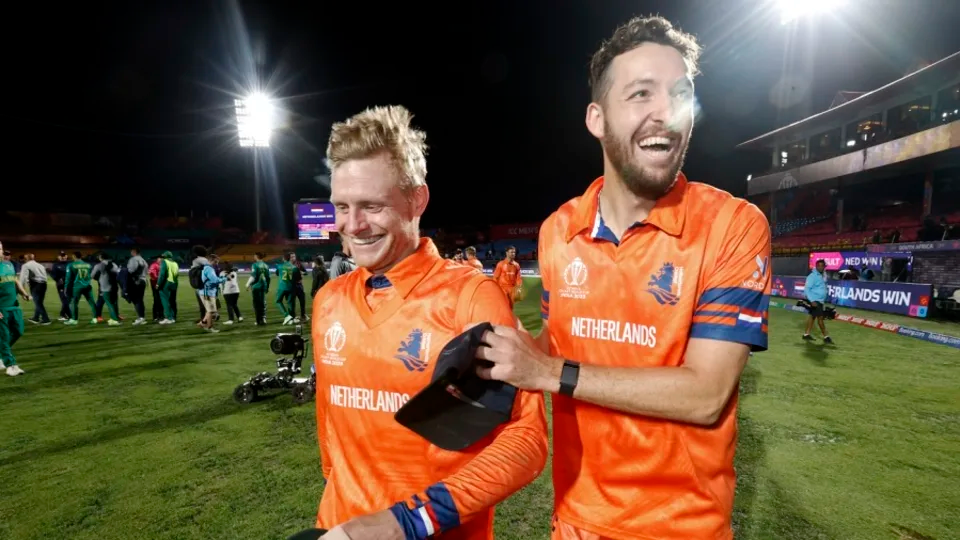
Once is coincidence, twice is a clue, and three times is proof.
To paraphrase Agatha Christie, that is the narrative around South Africa’s meeting with Netherlands at this T20 World Cup.
The Dutch beat South Africa at the 2022 tournament and ended their semi-final hopes in a match where South Africa appeared to be sleep walking, and then beat them again at the 2023 ODI World Cup, where they exposed South Africa’s vulnerability in the chase. If they to do the treble, not only will Netherlands take the lead in Group D, but they will offer conclusive evidence of the threat they pose to Full Members, especially South Africa.
Of course, it will take some doing after South Africa’s opening performance against Sri Lanka, where they reduced their opposition to their lowest T20I total and chased it down in fairly straightforward fashion thanks to the most stable middle-order of their white-ball era. In Aiden Markram, Tristan Stubbs, Heinrich Klaasen and David Miller, South Africa have bankers and big-hitters and, for this match, they also have the advantage of experience. They’ve already played at Eisenhower Park, and have first-hand knowledge that run-scoring doesn’t come easily;Klassen said they are prepared to use their “cricket brains” and play “smarter cricket”.
But the conditions could be good news for Netherlands, who are not naturally a line-up of big hitters and build their innings on a foundation of turning ones into twos. In other words, they tend to take a slightly more conservative approach to batting, which may work well here, but they’ll be wary of the uneven bounce of the surface and will have to come up with plans to counterattack especially against South Africa’s seamers. Their own bowlers were exemplary in Dallas and will look to build on that performance against a line-up that will likely be more proactive than Nepal’s, but who they have managed to keep quiet not once, but twice in the past. Third time’s the charm, they say.
Anrich Nortje’s stunning return to form against Sri Lanka means South Africa may not have to tinker with the bowling combination, and Gerald Coetzee and Tabraiz Shamsi may have to wait their turns to get a game. The batting line-up should be unchanged, with no space for Ryan Rickelton yet.
South Africa: Quinton de Kock (wk), Reeza Hendricks, Aiden Markam, Tristan Stubbs, Heinrich Klaasen (wk), David Miller, Marco Jansen, Keshav Maharaj, Kagiso Rabada, Ottneil Baartman, Anrich Nortje
Conditions in New York may tempt Netherlands to include an extra seamer and they have Kyle Klein in their squad. But it could come at the expense of a shortened batting line-up and they may not want to risk that.
Netherlands: Michael Levitt, Max O’Dowd, Vikramjit Singh, Sybrand Engelbrecht, Scott Edwards (capt, wk), Bas de Leede, Teja Nidamanuru, Logan van Beek, Tim Pringle, Paul van Meekeren, Vivian Kingma
[Cricinfo]
Latest News
Mustafizur, Rishad, Hridoy dazzle in Bangladesh’s tight two-wicket win over Sri Lanka
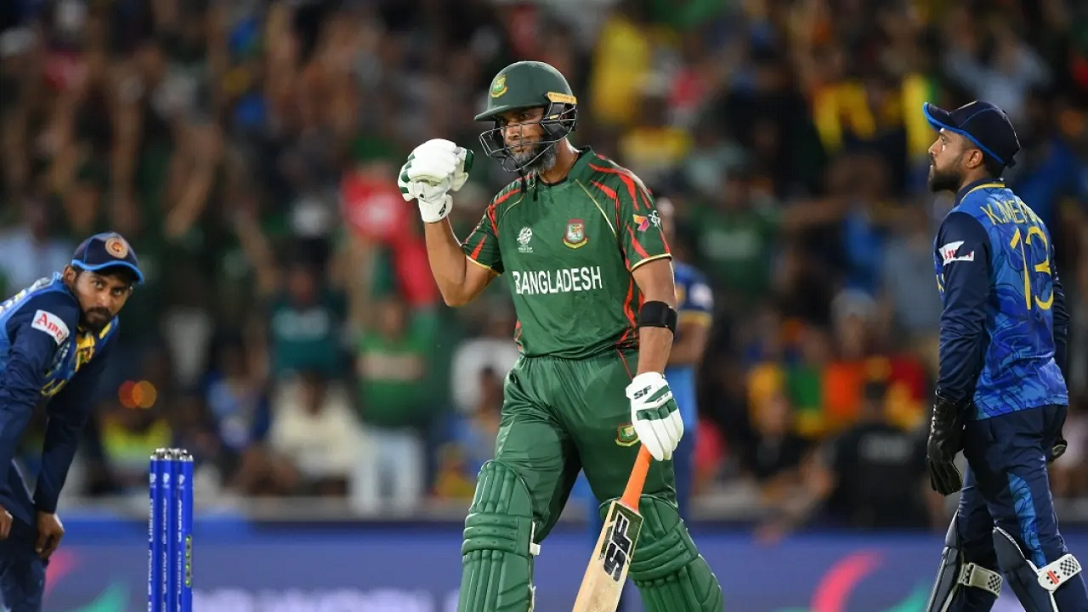
Nuwan Thushara’s last over brought Sri Lanka screaming back into the match,as he first bowled Rishad Hossain, and then nailed Taskin Ahmed in front of the stumps with a pinpoint swinging yorker. This left Bangladesh eight wickets down, with 12 runs still to get.
However, the experienced Mahmudullah was at the crease for Bangladesh, and despite some further nervy moments, pushed Bangladesh across the line off the last ball of the 19th over.
But this was a match chiefly decided by Bangladesh’s own outstanding bowling. Mustafizur Rahman was the best among them, using shorter lengths and his cutters efficiently, to claim figures of 3 for 17. Rishad Hossain’s three-for through the middle overs also kept Sri Lanka quiet.
Mustafizur was instrumental in Sri Lanka’s downward spiral through the middle overs, which culminated in a crash-and-burn end. Ultimately, their inability to find boundaries, or even rotate strike against good Bangladesh bowling resulted in their downfall. A score of 125 for 9 always seemed poor on a decent pitch, even if their bowlers made a match of it in the end.
Brief scores:
Bangladesh 125 for 8 in 19 overs (Towhid Hridoy 40, Litton Das 36; Dhanajaya de Silva 1-11, Nuwan Thushara 4-18, Wanidu Hasaranga 2-32, Matheesha Pathirana 1-27) beat Sri Lanka124 for 9 in 20 overs (Pathum Nissanka 47, Dhananjaya de Silva 21; Tanzim Hasan Sakib 1-24, Taskin Ahmed 2-25, Mustafizur Rahman 3-17, Rishad Hossain 3-22) by two wickets
[Cricinfo]


